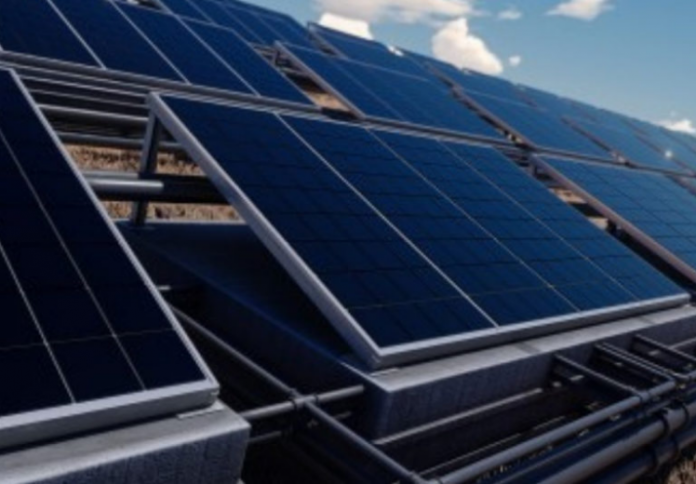The Uttar Pradesh Electricity Regulatory Commission (UPERC) has ruled that peak hours for banking and withdrawal of energy would be from 18:00 to 24:00 and off-peak hours from 00:00 to 18:00. The Commission determined the peak and off-peak hours while disposing of a petition filed by an open access solar project developer.
Background
Amplus Green Power has developed a 50 MW open access solar project in Mirzapur, Uttar Pradesh, for industrial and commercial users.
In its petition, Amplus said energy banking up to 100% was allowed under the CRE Regulations, 2014, during a period other than peak hours. The regulations also specified that withdrawal of banked power should be allowed as per the Time of Day (TOD) system during the peak and/or off-peak hours.
The solar power developer said that the peak and off-peak hours were not defined in the CRE Regulations. The TOD slots mentioned in the Commission’s order were to determine the retail tariff. However, the Uttar Pradesh state load dispatch center (UPSLDC) used the TOD slots for energy banking and withdrawal.
Amplus requested the Commission clarify if energy banking and withdrawal under the CRE Regulations are allowed per peak or off-peak hours. It also appealed to the Commission to restrain Uttar Pradesh Power Corporation Limited (UPPCL) from denying the energy banking facility based on the TOD structure.
The developer also sought to know if no short-term agreements would be needed for banked energy’s delivery and withdrawal when there is an existing long-term open access agreement.
UPPCL’s response
In its response, UPPCL said that under the CRE Regulations, withdrawal of banked energy should be allowed as per the TOD system. Therefore, banked energy’s withdrawal during peak or off-peak hours must not be more than energy banked in respective TOD slots.
TOD slots were introduced to streamline and manage the demand while determining the multi-year tariff for distribution companies (DISCOMs). The TOD system was divided into four slots of six hours each.
Therefore, it was reasonable that energy withdrawal during a particular TOD slot must not exceed the energy banked.
UPPCL said the state required around 22 GW of energy. However, since the peak demand was around 25 GW, there was a shortage of 3 GW during peak hours. It also submitted that the average demand from 12:00 to 5:00 hours was around 17.1 GW for April to October in the last three financial years. It could be observed that the peak hours between April and October were from 19:00 to 3:00 hours.
Based on operational data available on Supervisory Control and Data Acquisition (SCADA) system, UPSCDL said peak hours in winter were between 5:00 and 7:00 and from 18:00 to 22:00. Peak hours in summers were from 19:00 to 1:00 hours.
Commission’s analysis
The Commission said the objective of introducing the TOD system was to shift the load from peak hours to off-peak hours and reduce pressure on DISCOMs. The TOD for a banking system by captive generating stations differed from the TOD mentioned in the DISCOM tariff order. Captive users retrieved energy banked with DISCOMs and did not purchase power. On the other hand, the four TOD slots applied to consumers who purchased power directly from DISCOMs.
Therefore, the Commission directed that the TOD system must not be applied on withdrawal of banked energy in case of captive users.
Regarding clarity in defining peak and off-peak hours, the Commission observed that the winter morning peak demand was about 11.5 GW. However, DISCOMs signed PPAs for much higher capacity. Therefore, morning hours should not be included in peak hours.
After examining the load curve of DISCOMs and the slight shift in peak hours, the Commission defined that the peak hours would be from 18:00 to 24:00 and off-peak hours from 00:00 to 18:00 for energy banking.
The Commission also directed that there was no requirement to sign a fresh open access agreement if the injection and withdrawal points were the same. The energy generated for supply or banking would not exceed the capacity and duration granted for open access.
Last year, UPERC shed light on what qualifies as a captive generation project and when it can withdraw banked energy.
Subscribe to Mercom’s real-time Regulatory Updates to ensure you don’t miss any critical updates from the renewable industry.
Peak & Off-peak Hours Specified for Energy Banking of an Open Access Solar Project
The peak and off-peak hours are from 18:00 to 24:00 and 00:00 to 18:00, respectively
Source:MERCOM
ViaHarsh Shukla






